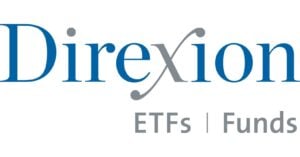When juggling the responsibilities of life as a single parent, it can be easy to slide into debt.
Sarah, for example, recently turned 50, is a single parent of two and has $80,000 in debt total. She owes $55,000 on her credit cards and an additional $25,000 that she missed paying on taxes, not including the total she owes on her mortgage.
Her credit card debt alone is larger than the average American household’s credit card balance of $6,065. In terms of overall debt, the latest data from the Federal Reserve shows that the average U.S. household debt is just over $105,000 per household, but this includes mortgages as well as auto loans, student debt, credit cards and other forms of personal debt.
Beyond the almost $2,000 per month in debt payments, Sarah also needs to cover her $2,100 mortgage payment. With retirement age on the horizon, she feels like she’s drowning under mounting financial pressures. And without savings or retirement funds, she wants to map out her next steps carefully.
For Sarah, bankruptcy is off the table, but she still wants to find a way forward. So. here is what she — and you — could do next, when faced with such a situation:
Don’t miss
- Thanks to Jeff Bezos, you can now become a landlord for as little as $100 — and no, you don’t have to deal with tenants or fix freezers. Here’s how
- I’m 49 years old and have nothing saved for retirement — what should I do? Don’t panic. Here are 6 of the easiest ways you can catch up (and fast)
- Robert Kiyosaki warns of a ‘Greater Depression’ coming to the US — with millions of Americans going poor. But he says these 2 ‘easy-money’ assets will bring in ‘great wealth’. How to get in now
1. Evaluate your finances and set a realistic budget
When facing a mountain of debt, the first step is to assess the situation. Gain clarity by tracking each of your expenses and income.
This will give you a realistic picture of where you stand with your expenses and income, help you plan ahead and stretch every dollar as far as it can go, while helping you eliminate any unnecessary spending. Next, build a bare-bones budget that allows you to cover all of your basic needs.
With this in place, ratchet down your spending. Move on to actually eliminate any unnecessary spending. This will alter your lifestyle and feel uncomfortable, but it doesn’t have to last forever if you do it right.
Take a closer look at your largest expenses. For most Americans, housing, transportation and food represent the biggest line items in any budget.
Start by taking a look at your housing expenses and how they ladder up to your long-term financial goals. Sarah is a homeowner with a $2,100 monthly mortgage payment and $100,000 in home equity.
If you don’t want to relinquish homeownership, then refinancing your mortgage to lock in a lower payment could help. Downsizing or renting out a room may be other ways to help offset housing costs.
If you aren’t married to the idea of homeownership, then look into the cost of renting a reasonable place to call home. Selling your property with $100,000 in equity would help you wipe your debt in the quickest way possible.
Beyond potentially paring down your housing costs, evaluate your transportation costs. If you drive a relatively expensive vehicle, swap it out for a more affordable ride. You may also want to consider remote work, if this is possible for you, as this would further free up both any time and money spent on commuting.
Lastly, try to meal plan once a week, so you only buy the groceries you need (preferably at discount or cheaper grocery stores), avoiding dining out.
Read more: Want an extra $1,300,000 when you retire? Dave Ramsey says this 7-step plan ‘works every single time’ to kill debt, get rich in America — and that ‘anyone’ can do it
2. Make a debt repayment plan
After making adjustments to your spending habits, it’s time to make a debt repayment plan.
Starting with the tax debt, consider applying for an IRS payment plan to break down your large tax bill into more manageable monthly payments.
Next, tackle your credit card debt. If you have the debt spread across multiple credit cards, start by making a list of each balance and the attached interest rate.
Common repayment strategies include the [snowball or the avalanche methods]https://moneywise.com/u/managing-money/debt/what-is-the-debt-snowball-method-explained (). The snowball method involves putting all available cash toward the smallest balance so you rid yourself of that first before moving onto the next one, while the avalanche method tackles the balance with the highest interest rate first.
Technically, the avalanche method is more mathematically efficient, reducing the total amount of money you pay on interest but the small wins of the snowball method might give you the motivation to stick to the plan.
Refinancing offers another way to manage debt repayment. Typically, personal loans come with significantly lower interest rates than credit cards. If you can refinance your debt into a single larger “consolidated” loan with a lower fixed interest rate, a home equity-based loan (or HELOC) or a transfer balance card, this may allow you to pay down your balance more quickly without added costs.
Lastly, while this isn’t an option for Sarah, you may want to explore Chapter 13 bankruptcy.
3. Look to the future
Picking up extra income can help you make headway in your debt repayment faster. And, if you take on a side hustle, you aren’t alone; more than half of Americans have one.
Some possible side gigs include delivering groceries or meals, tutoring, freelancing graphic design or writing. You may even consider a more traditional part-time job at a small business in your area.
Depending on the age of your children, you can involve them in contributing with their own part-time job to help cover their non-essential expenses or as a way to contribute to their education fund.
Once you’ve made headway in reducing your debt, it’s time to start shoring up your emergency fund. Experts suggest saving three to six months of expenses. This will help you have enough to cover unexpected expenses without sliding back into debt.
With these blocks in place, you can divert funds to help pay off your mortgage faster and even start saving for your retirement.
What to read next
- You don’t have to be a millionaire to gain access to this $1B private real estate fund. In fact, you can get started with as little as $10 — here’s how
- Here are 5 ‘must have’ items that Americans (almost) always overpay for — and very quickly regret. How many are hurting you?
- Accredited investors can now buy into this $22 trillion asset class once reserved for elites – and become the landlord of Walmart, Whole Foods or Kroger without lifting a finger. Here’s how
- Rich, young Americans are ditching the stormy stock market — here are the alternative assets they’re banking on instead
Stay in the know. Join 200,000+ readers and get the best of Moneywise sent straight to your inbox every week for free. Subscribe now.
This article provides information only and should not be construed as advice. It is provided without warranty of any kind.


